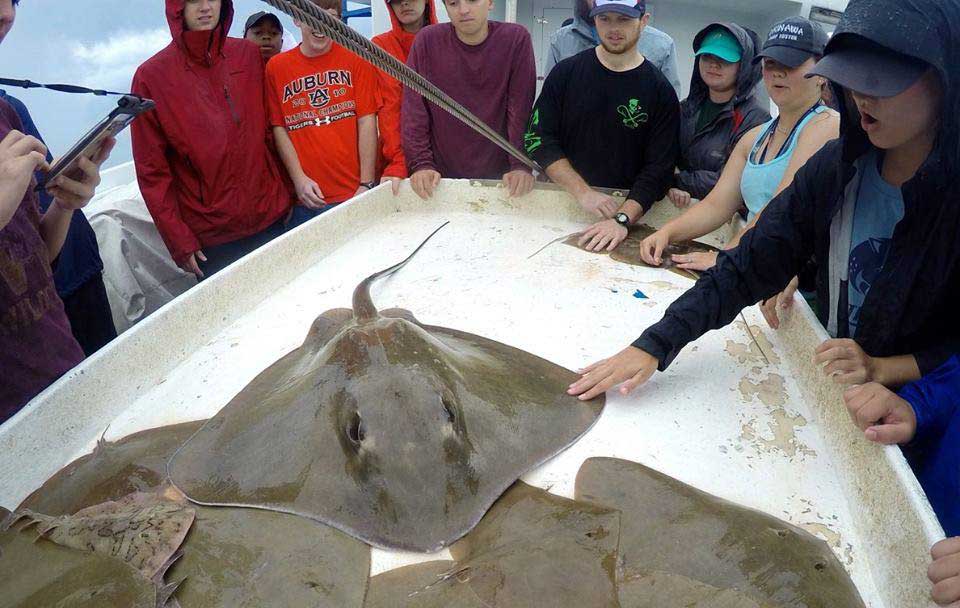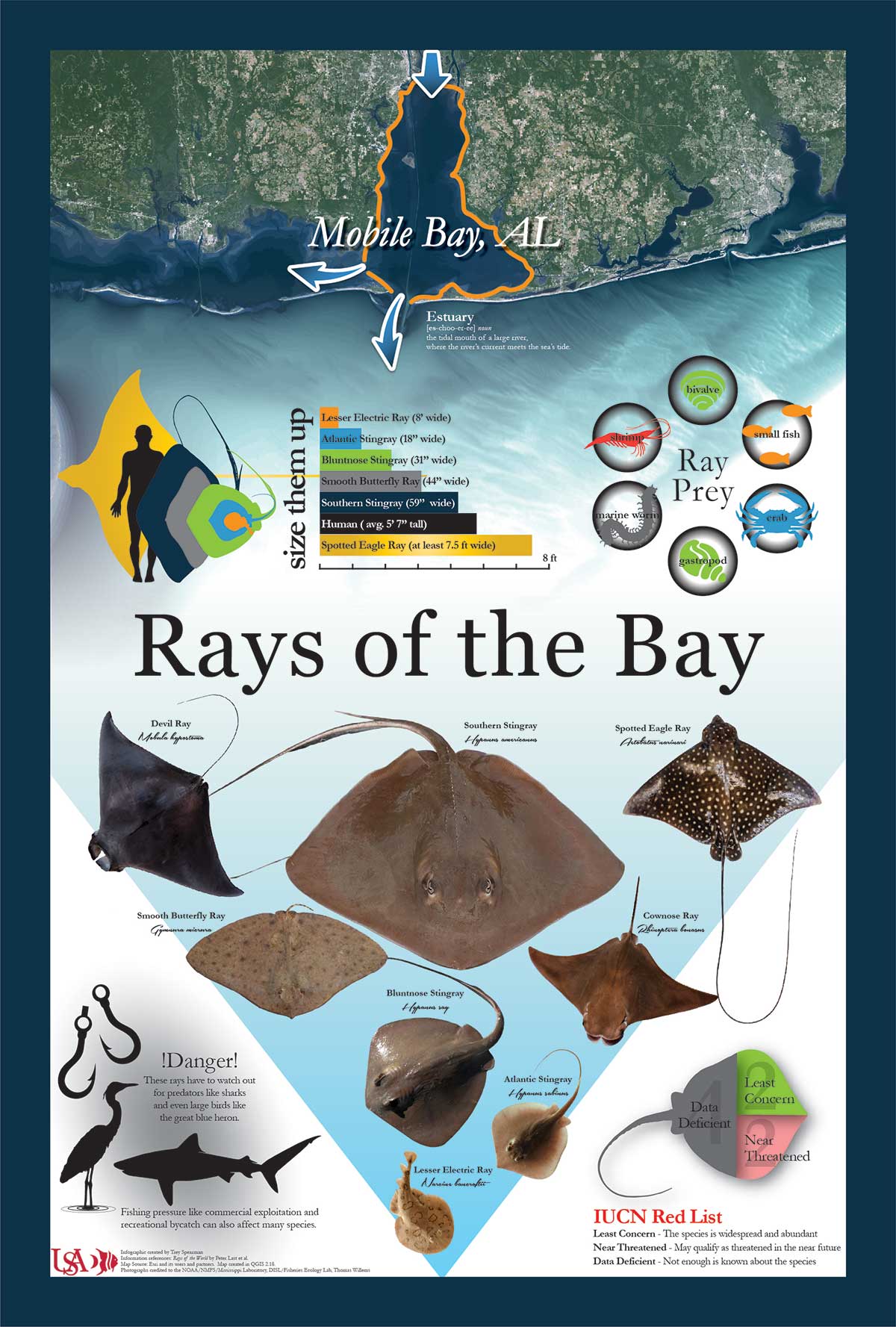
Dauphin Island Sea Lab’s Discovery Hall Programs is a field trip destination for approximately 10,000 school students every year. One of the many classes DHP teaches is a class focused on estuaries. Students learn about the estuary and how scientists study it by taking a trip aboard DISL’s research vessel, the Alabama Discovery.
One of the activities aboard the vessel is to trawl and collect organisms that call the bay home. As DHP teaches this class about 150 times in a typical year, we get to know what organisms are present at different times of the year.
Last year, Dr. Marcus Drymon came to DHP and asked us to collaborate on one of his research projects to learn more about the distribution and population dynamics of the various species of rays found in the bay. Our role was pretty easy – to collect all species of rays found in our trawls and document their location.
The specimens were then turned over to Dr. Drymon’s lab. There, he and his team of graduate students, interns and technicians confirmed species identification of the rays, and collected an array of other data, including sex, size, and maturity state.
Back in the lab, multiple samples were taken from each individual, including stomach contents and tissue samples for age and growth, maturity, trophic ecology, and heavy metal analyses. Trey Spearman has developed an informational and visually striking poster which will be shared with Discovery Hall’s visiting students – and of course shared with the public.
Dr. Drymon’s lab recently visited the DHP educators and gave a project update on the first years’ worth of information.
- To date, approximately 8,400 individuals have been collected.
- Mobile Bay is home to at least eight species of ray, the Smooth Butterfly Ray, the Southern Stingray, the Lesser Electric Ray, the Eagle Ray, the Cownose Ray, the Devil Ray (a small type of manta ray),the Atlantic Stingray, and the Bluntnose Ray.

These last 2 species were a bit of new knowledge to us. We knew that the Atlantic Stingray (also known as the stingaree) was common in Mobile Bay, but there appears to be a very similar looking species, the Bluntnose Ray, that is also relatively common.
Analysis of these data demonstrate the fascinating way in which different species of stingray share the common space within Mobile Bay. For example, three out of four Lesser Electric Ray sampled in DHP trawls are male, a striking degree of sexual segregation. For Smooth Butterfly Ray, mature males appear in Mobile Bay in February, as opposed to pregnant females, which don’t appear until May.
A comprehensive understanding of the spatial ecology of these rays, complemented with DNA barcoding of their stomach contents, forms the basis of Matt Jargowsky’s graduate work, which he’ll present at a national scientific meeting this summer.
Dr. Drymon indicated that this work is an important contribution to an ongoing broader re-evaluation of the distribution and abundance of these rays in the Gulf of Mexico region, which will help shed light on their ecological roles.
In turn, the Discovery Hall educators have been sharing this information with visiting student groups explaining their contribution to this project, giving them a glimpse into the value of these types of data, and perhaps more importantly, how science is done.